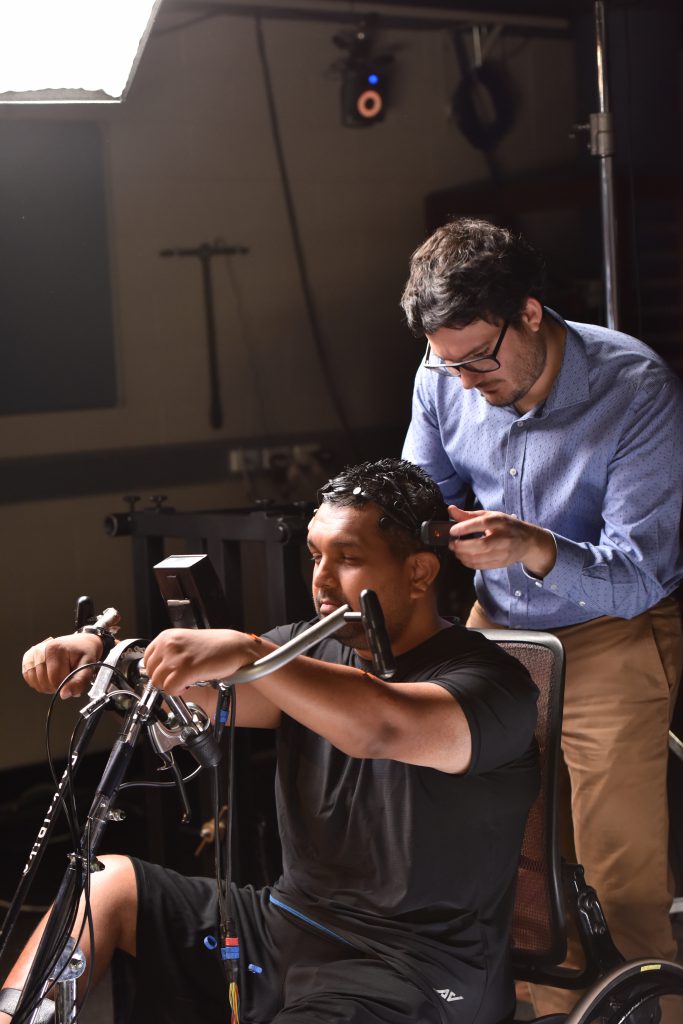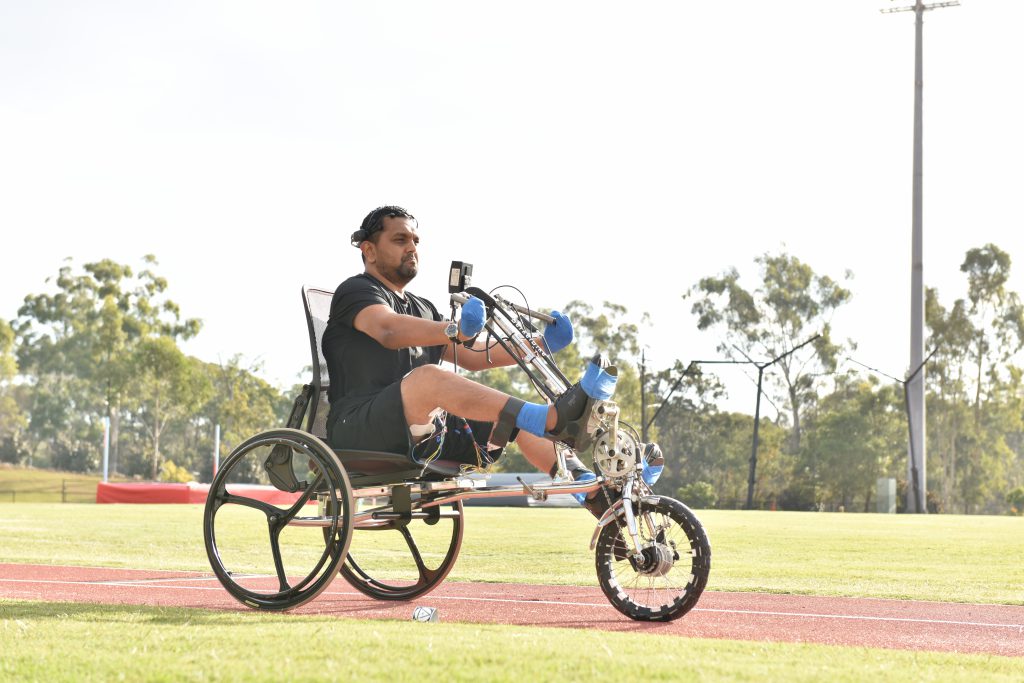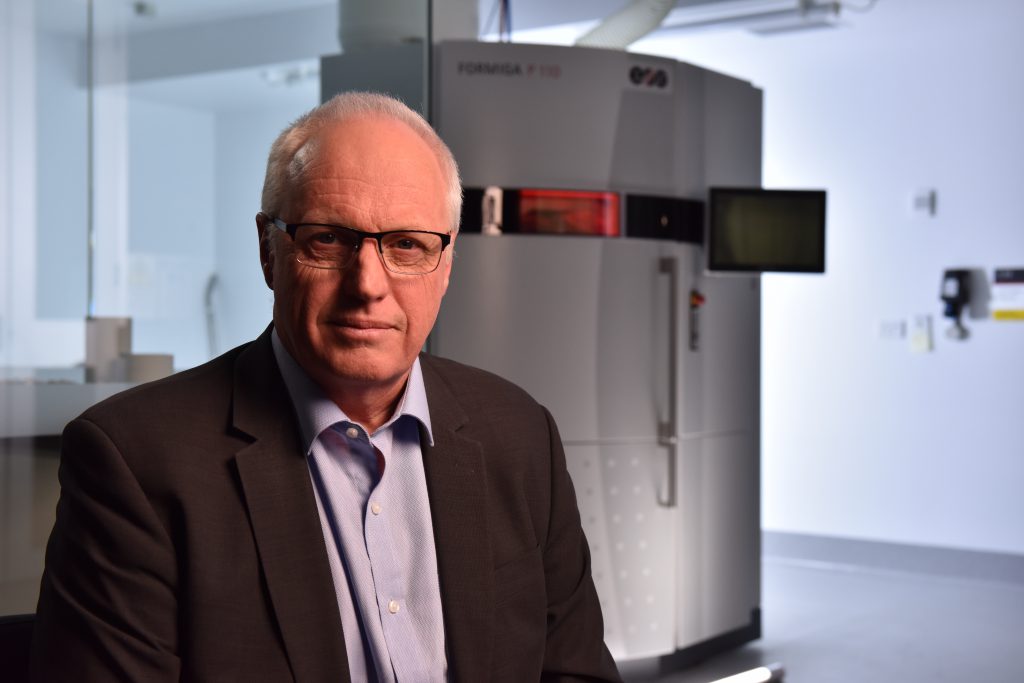Griffith University researchers Dr Dinesh Palipana and Dr Claudio Pizzolato were beaming as they explained their breakthrough techniques for patients with spinal cord trauma.
The enthusiasm for their work was subtly captured in the latest instalment of Griffith’s high-profile Remarkable Campaign.
Before they became colleagues and friends, they were next-door neighbours on the Gold Coast.

Dr Claudio Pizzolato and Dr Dinesh Palipana are working as a team
Now the researchers, through a clever symbiotic working relationship, have a single purpose to effect change in the treatment of spinal cord trauma to restore movement in patients.
By employing digital ‘body twins’ to develop innovative rehabilitation techniques, they are at the leading edge of a breakthrough that has garnered global interest from industry and the medical profession.
For Dr Pizzolato, Research Fellow at Griffith University, it’s the culmination of years of work in the biomedical field.
For Dr Palipana, a quadriplegic since 2010 following a car crash, the journey began at a more personal level.
“My dirty little secret is that I want to cure myself one day,” says Dr Palipana, who is a lecturer at Griffith School of Medicine, a Research Fellow at Menzies Health Institute and a junior doctor at Gold Coast University Hospital.
“The potential for this kind of work to restore function in those with paralysis is huge and that’s what we’re excited about.”
The researchers are supported by Griffith University’s Advanced Design and Prototype Technologies Institute (ADaPT), which was established within the Gold Coast Health and Knowledge Precinct to integrate all of the University’s key R&D equipment and to design and manufacture high technology devices.
Dr Palipana’s paraplegia has been a major focus of the spinal cord program through which the team is testing the power of neural patterns to trigger muscle activation otherwise lost to trauma.

This work is made possible by creating a highly accurate digital duplicate of the body, both external and internal, to map the distinctive traits of a person’s bones, muscles and joints.
The data collected is then used to engineer a patient-specific medical implant or wearable device, or create a rehabilitation program aligned with a person’s unique physiology.
Dr Pizzolato says digital twins give an inside view of a patient’s body to better understand what’s going on during rehabilitation.
“We can interrogate the digital twin to figure out how to best activate muscles to achieve the rehabilitation,” he says. “Personalisation in this context is essential.”
While digital twins are not new, the ADaPT research team’s approach is unique because of the real-time analysis of movements in the spinal cord patient. It’s a process that Dr Pizzolato says saves time and leads to customised treatment including highly targeted surgery.
“Most of the treatment out there for spinal cord injury is very generic,” he says.
“You can’t treat everyone the same and the most important part of personalisation is being able to adapt to the increasing capabilities of the person being rehabilitated.”
Professor David Lloyd, a biological engineer who co-developed ADaPT, describes the personalised techniques being mastered by the research team as pivotal to the development of highly effective implants and wearable devices.

Professor David Lloyd
“This is different to other technologies mainly because it encompasses the whole life cycle,” he says.
The potential benefits include significantly reducing costs for surgery and rehabilitation, as well as improving patient outcomes.
“This is an enabling technology that can put Australia at the cutting edge of designing implants and wearable devices,” Professor Lloyd says.
“ADaPT and the personalised digital twin technology is getting a lot of international attention from biomedical device companies, which is really important to bring that investment into the region and into Australia.
“It’s also attracting Research Fellows and PhD students who want to come to Griffith University and the Health and Knowledge Precinct, and study in that environment.”
Professor Lloyd sees no limits to future adaptions of this research and, as digital twin technology evolves, he says medical professionals will one day be able to reconstruct body images instantly in surgery.
“We’re working on that pathway at the moment,” he says.
Following his car accident, Dr Palipana spent years in recovery before resuming his medical studies. As Queensland’s first quadriplegic medical intern, he sees any progress as a major step forward for the lives of those with spinal cord trauma.
“Being able to move a finger or grasp something when you can’t use your fingers previously changes things entirely,” he says.
“The need for therapy, the need to get some function back is urgent and important.”
From his perspective, many people confined to a wheelchair ‘just see the world go by’.
“They feel like they’re missing out. They feel like their body is deteriorating over time with complications.
“So, it’s imperative that we come together and create these therapies, and that’s what we’re doing here at Griffith.”
